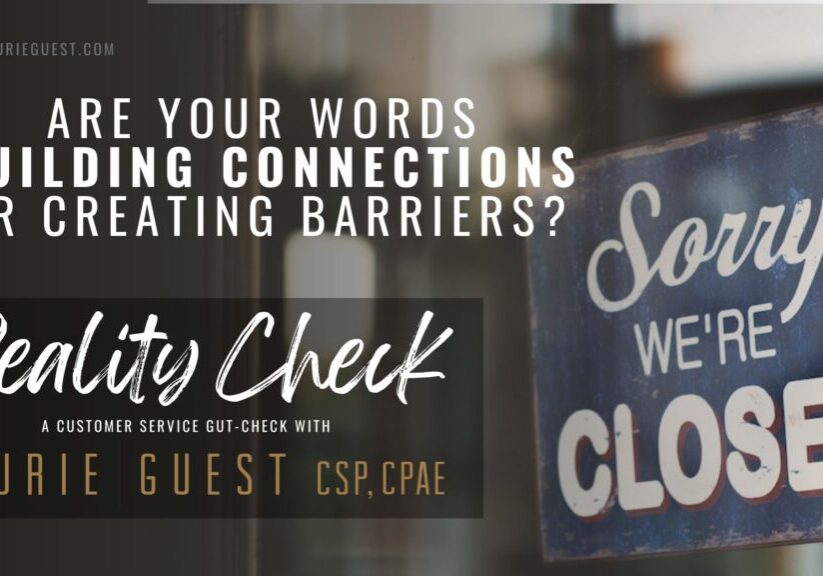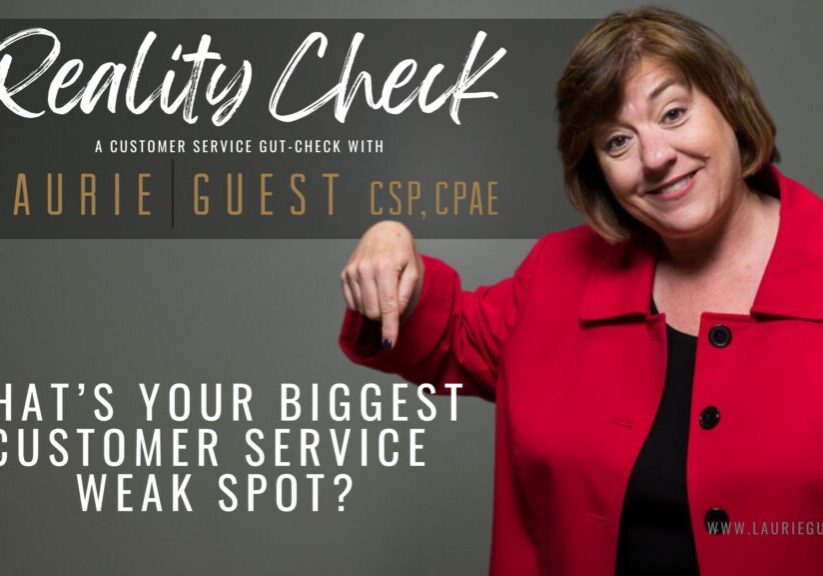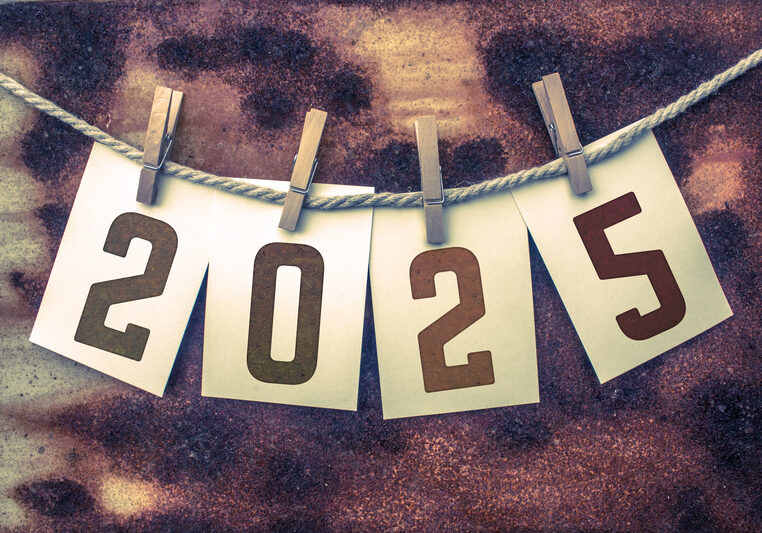We have never seen anything like this: a total disruption of our world. This pandemic has impacted our daily lives from small things like gathering with friends to the huge alterations to our livelihood and financial stability as a country. After more than two weeks in my self-sequestered status, I have gone from furiously counting toilet paper rolls on hand to thoughtfully strategizing my business model for when this over. And it will be over. We just don’t know when.
As a professional speaker, trainer, and author on customer service, I’ve received many questions from clients on how to handle the interruption of income, the inability to open doors, and the insecurity about when and how to reach out to customers. While the course of action will vary depending on your industry, one thing I know to be true? Now is not the time to lift your foot off the accelerator and coast, waiting things out, or brake and stop all activity.
My speaking colleague and friend, Bryce Austin, is an avid race car buff. He shared this interesting fact with me: at Road America, there’s a turn called “the kink,” where cars must go through a tight turn at well over 100 mph, in between two concrete walls. Scary stuff. But Bryce says that tight turn can be a game changer in a surprising way. “Winners of races at Road America overcome their fear of ‘the kink’ and keep their gas pedal flat to the floor. It’s a perfect place to pass those that let fear and doubt get the better of them.”
We are in the middle of “the kink” right now, and his advice can help all of us not just survive the twists and turns we’re experiencing. It can help us come out at the end of all this in a better position than we are now.
So, if you’re ready to leave fear and doubt in your rearview mirror, now is the time to put the gas pedal down. What does that really mean? In my world, it means focusing on internal processes and improving them, writing more, and spending real time sitting and thinking about what the new normal might look like and how I can be a resource to those who need it. For you, it might be using downtime to train your staff on how to improve service levels when the “all clear” comes. When your competition pumps the brakes because of their indecision about how to communicate with customers, that is your chance to accelerate “into the turn.”
Smart Communication During Challenging Times
Connecting and communicating with clients and customers is essential during this crisis. But to be effective, your message and method need to be strategic and intentional. Here are two important guidelines:
Craft messages that are relevant to your customer
A well-crafted email, a social media touch, or a phone call are all options for connecting. However, beware of blasting your message to a list of people who have never been customers. I’ve received dozens of emails from companies telling me how they are handling the virus and offering to be a resource, but many of them have no social capital with me in the first place. I’m just an entry on a database somewhere. I had a speaker I met for the first time at an event last year (someone who would not give me the time of day when face-to-face) offer, via an email blast, to be my trusted coach because he cares about me so much. Total disconnect and a turn-off for sure. I will never do business with him, even when we arrive at better times.
Develop messaging that fits the stage of the disruption.
In the early days of this crisis, the best type of message contained up-to-date closure information and steps being taken to fight the virus, which may result in skeleton crews or limited access to a facility. The next phase is the one we are in as I write this article, what I hope is the “middle” of the crisis. We have been on “stay-at-home” status for several weeks and the true impact of the situation is beginning to take its toll, while anxiety is mounting in many households.
Overnight, some people have become at-home teachers. Others face a total loss of income without a safety net. Now, you are planning to contact a group of people not knowing what their story is or how well they are adapting to these challenges. A poor attempt at empathy or a careless choice in sales language can change the professional relationships they have with you in a heartbeat. I encourage you to give your customer the permission to rest, to take a breath, to exhale.
Follow that with an offering of support and any free resources that can benefit them without jeopardizing your own financial stability. For example, links to good articles, expert advice from your industry, or suggestions of actions they can take that are relevant to your niche. In the last paragraph, provide reassurances on issues related to money. You could pause their membership or extend their access time. Finally, foreshadow what you hope to offer or do for them when things are better. Refrain from making promises or guarantees, but end with positive, “stay-in-touch” language.
When Is the Right Time to “Sell” Again?
I’m not sure there is one right answer to this question. Being married to an attorney, I’ve adapted a popular phrase his profession uses: “It depends.” If you work in an industry that is one step away from essential, like hair salons, sit-down restaurants, and work-out facilities, your reactivation to sell mode is going to come quickly. Work now to craft the language of your messaging so you’re not just mimicking what everyone else is saying. Don’t get lost in the crowd. Get creative! Creativity + Humor = Connection, if you serve an industry where that is appropriate. For example, a hair salon might consider posting this message to social media: “Worried that people now know your REAL hair color? We reopen on (insert date). Make an appointment today and we will send you a free paper bag to get you here!”
Those of you in industries that are another step away from essential—entertainment venues, travel, and event planning, for example—may have a longer runway to get back. Your sales language may need to be a little more delicate and a little lighter on the humor. A travel advisor might send this message to a loyal customer: “We are so excited to restart your vacation planning when you are ready. As always, I’m here with great ideas for new places to visit and new protocols to help ensure your health and safety.”
The short answer to the question of when to start selling again might be: you don’t sell, you serve. The best way to serve a customer is to understand them well enough to know what they need and combine the right words to offer your services in a way that benefits them. Sales 101 is: Find the pain, provide the solution. Put words to your solution and serve it up!
I’ve never driven a race car and I really have no idea what kind of bravery it takes to take a tight turn at 100 mph. But I do understand the concept of keeping my head down and focused during times of change. Disruption can have some positive outcomes. The market will shift and with it will come opportunities—at least for those who put the gas pedal down.







